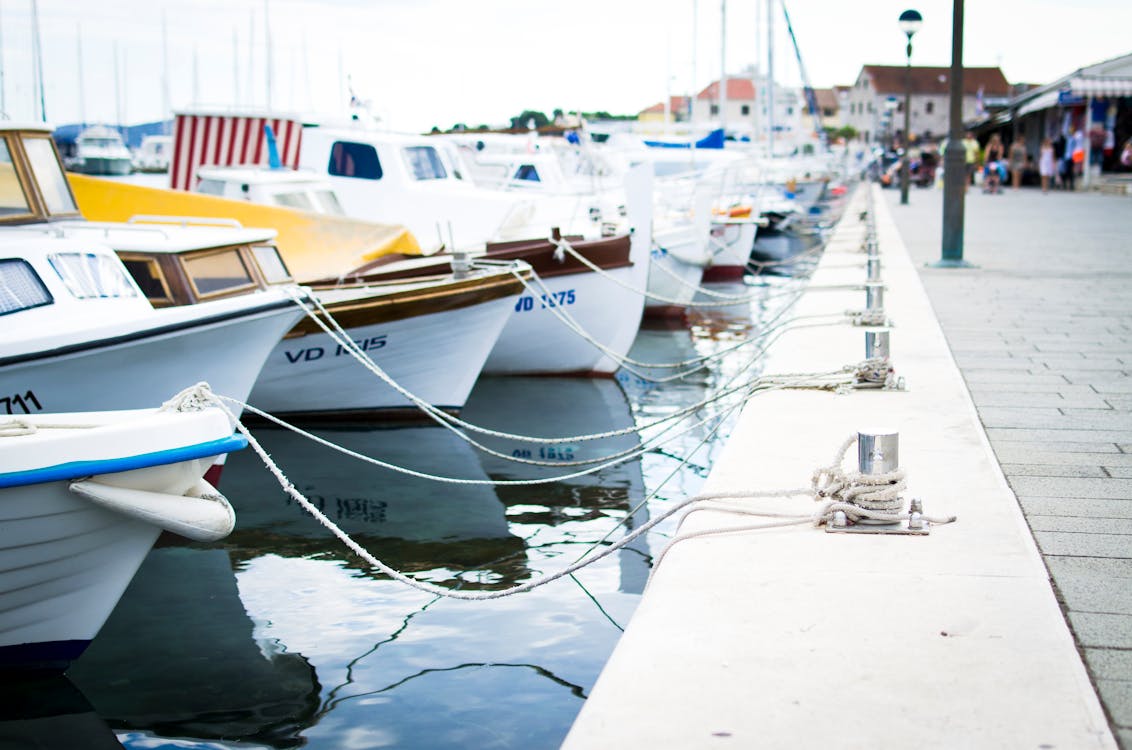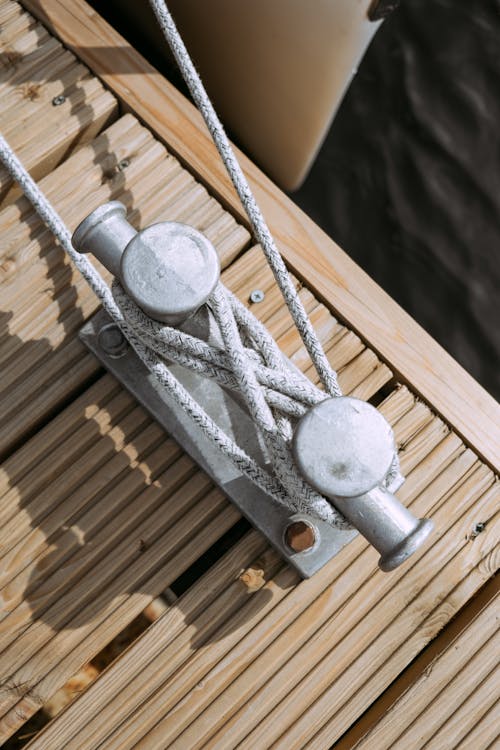New to boating? If the answer is yes, prepare to learn an entirely new language.
For a new boat owner, figuring out the difference between a boat slip, boat dock, and marina takes time, research, and regular chances to chat with other boaters. Consider this article your very own Boat Bible: today, we’re clarifying common nautical terms so you can look & feel like a master of the marina.

What is a Marina?
A marina is a water-based facility where recreational boaters can store their yachts and small vessels. Compared to ports, which store larger passenger ships and freighters, marinas store recreational watercrafts only. Marinas are typically located in harbors, docks, or basins, providing easy access to larger bodies of water.
A marina offers various services - most notably, moorings and boat slips - that allow boaters to store and protect their personal watercraft. “Mooring” simply refers to any structure to which a boat can be secured, and boat slips and docks are specific kinds of mooring structures.

Boat Dock vs. Boat Slip
Depending on where you boat, you’ve likely been exposed to a confusing mixture of nautical lingo. Although “boat dock”, “boat slip”, and “marina” are often used interchangeably, we don’t need a linguist to outline the differences between these terms.
What is a Marina Slip?
Within a dock, think of a boat slip as a single parking space for your vessel. It’s enclosed on three sides and therefore easier to both exit and pull into.
-
For boaters who want more protection and privacy on the water, boat slips help secure the boat in place and prevent bumping and grinding against the edge of the dock.
-
Traditional U-shaped boat slips optimize space on a dock by allowing more boats to be moored or “parked” along a pier.
What is a Boat Dock?
In most regions of the U.S., a boat dock refers to the wooden or metal structure where a boat is parked or moored.
- Relative to boat slips, boat docks are open on three sides, which means that boats must be parked parallel to the dock. Inevitably, this increases the boat’s exposure to water traffic - and removes the protection you’d get from a boat slip. That said, a simple dock is typically less expensive than a boat slip and best suited for a secluded, low-traffic area like a private lake or pond.
- For boaters with limited finances and/or space, a lightweight and durable aluminum boat dock is perfectly acceptable.

Bottom line: boat slips and boat docks are both forms of boat storage. Their differences lie in the details. When choosing between a boat slip and a boat dock, take note of the following:
- The size, age, and model of your boat; and if you've recently painted your vessel or applied a boat wrap, you may need the extra protection of a boat slip
- The location and cost of your local marina(s)
- Where you boat: is it a secluded lake or a bustling beachfront?
- How long you'll be storing your boat - and how much you have saved in your boating budget
Average Marina Cost
In the U.S., the cost of renting a boat slip is typically measured in price per foot of the boat’s length. For a 1-year boat slip rental, boaters can expect to pay anywhere from $12 to $240 per foot of the boat’s length. The price of a marina depends on several factors:
1. Boat Dock vs. Boat Slip
Your storage choice - either a boat dock or a boat slip - will affect the price of storing your boat in a marina. If you’re docking the boat for a few hours while grabbing lunch onshore, it will cost less than mooring your boat in a boat slip for days or months at a time.
- Prepare yourself for more boating lingo! The act of attaching your mooring lines from your boat to a boat slip is called berthing. This means that the boat is stored for an extended period of time, as opposed to simply docking the boat for a few hours.
- For temporary or transient moorings, boaters pay by the day; for permanent moorings, boaters pay for the entire season.

2. Location
Unsurprisingly, boat slips in small town marinas typically cost less than marinas in major, more expensive cities. Even in the same city, marina docking prices can vary significantly: in Los Angeles, for instance, Yacht Haven Marina boat slips cost $10.50/foot for 25’-30’-long vessels, while the nearby Marina del Rey charges $19.58/foot for 30’-31-long vessels.
3. Marina Add-Ons:
Depending on the location of the marina, boaters may have the option to pay for premium services such as on-site restaurants and entertainment, docking support, winterization, and on-site fuel stations.

Overwhelmingly, boaters opt for boat slips to maximize space and protect their vessels. But of course, there’s something nostalgic - and affordable - about a simple boat dock. To enhance your dock dialect, simply return to this article as needed: pair your knowledge with time and talking, and you'll be prepared to make the best decision for your watercraft and crew.

